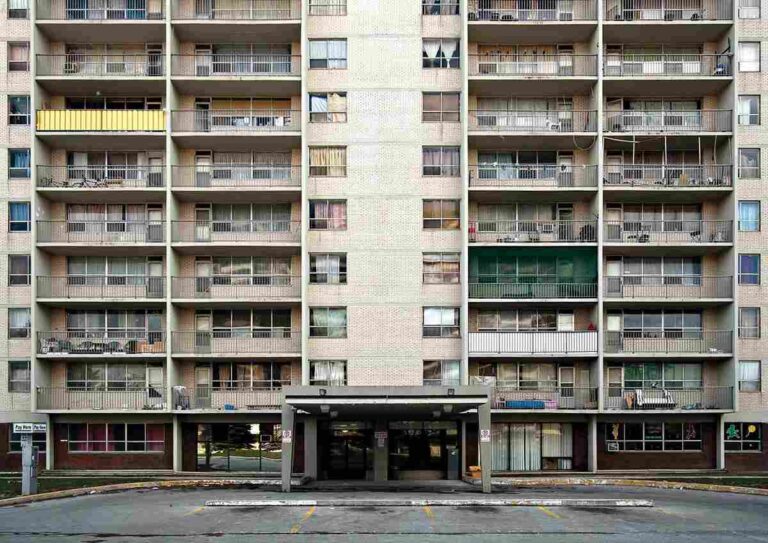Canada’s urban landscape has changed over the past few decades, along with the nature of how one lives.
From Toronto high-rise towers to Vancouver boutique high-rises, Canadians have a variety of housing choices available today that offer a combination of lifestyle, convenience, and home investment.
For families, young professionals, and retirees, it is essential to know what apartments are accessible in the marketplace today in order to make educated decisions on where to live and invest in Canadian cities.
This article delves into Canada’s most common types of apartments, their pros and cons, and how well they suit contemporary urban lives.
Studio Apartments – Cozy Efficiency
Studio apartments are usually the initial choice of young adults moving into Canada’s major cities.
They are generally less than 500 square feet and merge the bedroom, living room, and kitchen into one open area.
Pros:
- Relatively affordable rent in large cities
- Low maintenance and upkeep needs
- Best suited for solo professionals or students
Disadvantages:
- Limited storage space and furniture area
- Less privacy for couples or roommates
- Can be cramped in the long term
In Toronto, Vancouver, and Montreal, studios are especially attractive to those aiming for a budget-friendly initial foray into the property market or short-term rental agreements in the development of their careers.
One-Bedroom Apartments – A Balanced Choice
One-bedroom apartments feature a separate bedroom, more privacy than a studio yet still convenient in space and upkeep.
One-bedroom apartments are popular among young professionals, couples, and small families.
Benefits:
- Enhanced privacy and space separation
- Greater freedom of storage space and furniture arrangement
- Still generally affordable compared to larger apartments
Drawbacks:
- More costly than studios, especially central city locations
- Limited space for larger families
These apartments rule Calgary’s, Ottawa’s, and Edmonton’s urban cities’ rental markets, providing a middle option that is practical when it comes to price and comfort.
Two- and Three-Bedroom Apartments – Family Comfort
Families choose two- and three-bedroom apartments as a daily option in Canada’s suburbs and cities.
These apartments offer ample space for children, home offices, and storage.
Benefits:
- Ideal for roommates or families
- Typically found in family areas near schools and parkland
- More room for pets and recreational use
Cons:
- Increased rent or buying price
- Additional maintenance and utility expenses
- Less available in downtown areas
Cities such as Mississauga, Burnaby, and Quebec City offer an adequate supply of these larger units, which are usually equipped with amenities such as playgrounds, gyms, and parking facilities.
Condominium Living – A Special Category
Condominiums, or condos, are technically apartments but differ in ownership and investment.
Unlike rented apartments, condos are individually owned, with shared areas maintained collectively.
They combine the benefits of exploring property with the convenience of apartment living — a balance that appeals to many Canadians.
Pros:
- Ownership allows for long-term investment and equity growth
- Access to shared amenities such as gyms, lounges, and rooftop patios
- A sense of community and security within managed complexes
Cons:
- Monthly condo fees can be high depending on the building’s amenities
- Limited control over building management decisions
- Resale value may fluctuate with market trends
Understanding the difference between apartment and condo is essential for Canadians considering where to live or invest.
In cities like Toronto, Vancouver, Calgary, and Ottawa, condos continue to attract first-time buyers, professionals, and retirees seeking comfort and urban convenience.
Lofts – Open and Stylish
Loft apartments feature open floor spaces, exposed ceilings, and modern industrial design.
They are popular in renovated warehouses or new boutique complexes and are sought after by creative professionals and urbanites who appreciate style and functionality.
Advantages:
- Rare and fashionable living space
- Flexible interior space with open designs
- Typically located in action-packed downtown areas
Disadvantages:
- Expensive on a square-foot level
- Limited privacy due to the open layout
- It is expensive to heat and cool large open spaces
In Canadian inner-city areas such as Toronto’s Distillery District or Vancouver’s Gastown, lofts attract those interested in lifestyle and looks over conventional design.
Luxury Apartments – High Life in the City
Luxury apartments offer top-tier facilities, high-end finishes, and concierge services.
These are intended for those who can afford to pay for comfort, convenience, and status.
Advantages:
- Premium materials and finishes
- Amenities such as clubhouses, gyms, swimming pools, and lounges
- Prime city locations
Disadvantages:
- High up-front cost to purchase or lease
- High monthly charges for maintenance
- May feel impersonal unless a community
Luxury apartment living is most common in downtown Toronto, Vancouver, and Montreal and is aimed at professionals, executives, and investors.
Townhouse Apartments – Family-Friendly and Multi-Story
Townhouse apartments provide the best of apartment living in a more traditional house style, usually with multiple levels and individual entrances.
These are most favored by families requiring more space and independence without the maintenance of a stand-alone house.
Benefits:
- Multi-level layouts offer bedroom and living space division
- Often include small backyards or patio areas
- Suitable for roommates or families
Drawbacks:
- Tend to cost more than regular apartments
- Shared walls with neighbors
- Homeowner association regulations might come into play
In Ottawa and Mississauga, townhouse developments tend to be located in well-planned residential areas, offering living convenience along with direct proximity to city facilities.
Conclusion
Choosing the proper apartment in Canada depends on lifestyle, affordability, and future goals.
From small studios in busy downtown neighborhoods to spacious family units in suburban communities, there’s a housing opportunity for every kind of tenant.
Condominiums offer an additional layer of opportunity, merging the ease of apartment living with the advantages of homeownership.
For professionals, investors, and families, understanding the differences and trade-offs between each apartment category is key to making an informed and practical decision in the 21st century.


